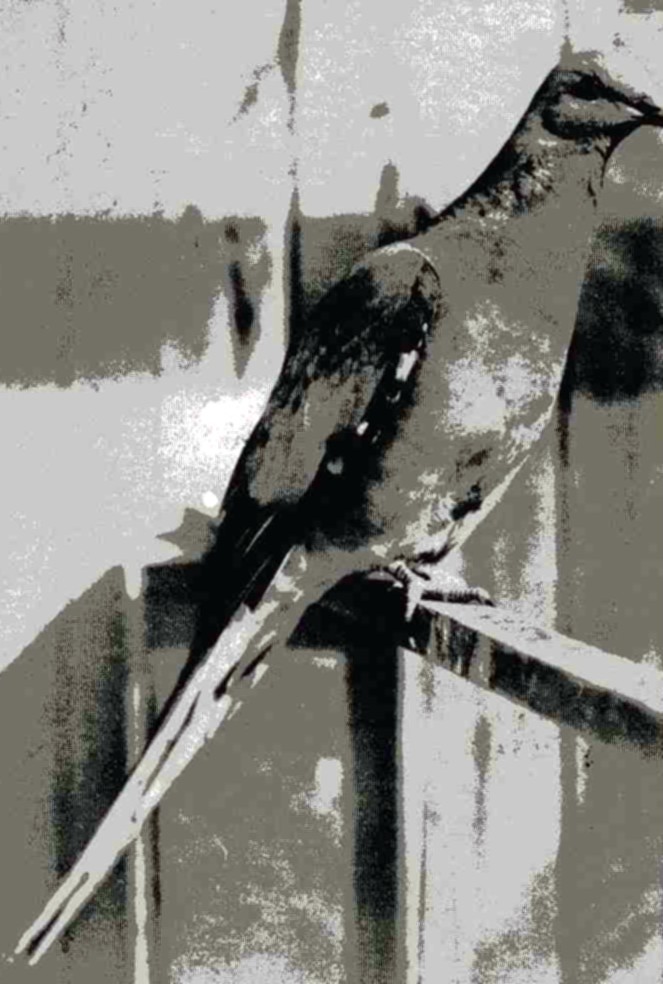|
| |
|
Nests
The passenger pigeon (Ectopistes migratorius) could be found
nesting in trees along streams. Their nests consisted of a crude tangle
of twigs and moss usually about six to seven inches in diameter. The
males would bring all the nesting materials one piece at a time to the
females who did the construction. The nests were frequently flimsy
enough to see the egg through the bottom. Most nests were placed on
limbs right next to the trunk of the tree. Trees often had multiple
nests sometimes as many as a 100 nests in a single tree. Large limbs
and even trees would occasionally collapse under the weight of the
flocks. Under the tree, dung would build up so much that it would kill
the surrounding vegetation around the tree and sometimes even the tree
itself. The passenger pigeon roosted by the hundreds of thousands for
protection against predators.
|

|
Courtship
When it was time for the males to court the females they would press
themselves up against the females in a more tactile, less visual
pattern then most birds. This allowed for reduced interference from
all of the neighboring birds. Their calls were also louder and more
clamorous than the usual soft cooing of most pigeons this was an
adaptation that permitted individuals to be heard above the rest of
the breeding colony.
|
Citation:
Schorger, A. W. (1955). The passenger pigeon: Its
natural history and extinction. Madison: The University of Wisconsin
Press.
Citation:
Schorger, A. W. (1955). The passenger pigeon: Its
natural history and extinction. Madison: The University of Wisconsin
Press.
|
Reproduction
The passenger pigeon had very small clutches, always one egg per pair of
birds. The egg was pure white, elongate, and elliptical that had a
slight gloss, but was not as “polished” as the domestic pigeon’s egg.
Both the male and female would take turns incubating the egg after it
was laid. The parents would take turns caring for the egg and feeding.
The switch was highly synchronized throughout the colony. There would
be a group movement usually between nine and ten in the morning and then
again between two and three in the afternoon. This was an adaptation
against many predators. A mass movement would often cause their
predators to become confused. After about 14 days the egg would hatch.
The altrical chick sometimes called a squab would be cared for by its
parents for as many as five weeks. The parents would feed the young a
kind of milk, that was secreted from their crops (both the male and
female produce the milk), as well as regurgitated food. Their small
clutch size was a reflection of their
diet; because of its low
nutritional value they were not able to produce high quality milk in
large enough amounts to feed more than one squab at a time. The
passenger pigeon was considered to be an r-strategy species, which means
that that they increase their fecundity by breeding several time a
season.
|
Next
Page
|



